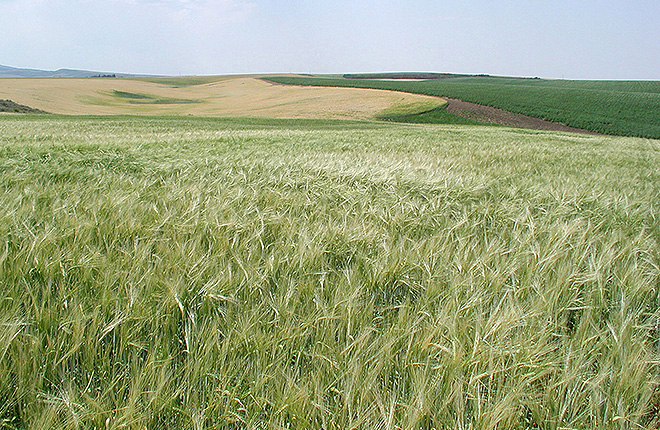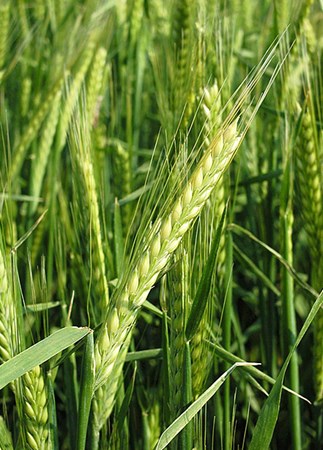New Eco-Friendly Barleys Have Many Benefits
Two new barley varieties are good for growers, the environment, and nonruminant animals.
Barley and other cereal grains and legumes contain a form of phosphorus called “phytate.” Phosphorus is an essential nutrient, but phytate cannot be digested by humans and nonruminant animals, such as pigs and chickens.
The new barleys, named Sawtooth and Harriman, are the third and fourth low-phytate varieties developed and released by Agricultural Research Service (ARS) plant geneticists Phil Bregitzer, Gongshe Hu, and Victor Raboy, and University of Idaho extension specialist Juliet Marshall. Sawtooth is a hulless barley, and Harriman is hulled. Hulless barley is considered a good source of food and feed. It has higher feed value than hulled barley.
|
|
Like the first commercial-quality, low-phytate variety, released in 2006, the new barleys provide a greater amount of phosphorus that’s bioavailable—more readily absorbed and used by animals. In addition, the phytate in these grains has been greatly reduced.
Bregitzer and his colleagues at the ARS Small Grains and Potato Germplasm Research Unit in Aberdeen, Idaho, develop new barleys for food and malting, as well as animal feeds.
Phosphorus in feed that’s not used by animals is released into the environment and can pollute water. It ends up in animal manure, which can be washed away by rain and irrigation runoff from pastures and fields into nearby rivers, lakes, and streams. It can also seep into underground water supplies.
“Unused phosphorus also ties up certain mineral nutrients, preventing them from being absorbed by the body,” Bregitzer says. “This can lead to mineral deficiencies in animals that consume diets made primarily of cereal grains or legumes.”
When fed to nonruminants, the novel barley grains enhance phosphorus and mineral nutrition and reduce phosphorus release into the environment, Bregitzer says.
In addition, the new barleys have a higher grain yield, higher test weight, higher inorganic phosphorus, and lower phytate phosphorus than previous low-phytate varieties. Low-phytate grains contribute to animal production and sustainable agriculture by reducing or eliminating the need for phosphorus supplementation and by decreasing the amount of phosphorus released into the environment from animal production facilities.
Growers who raise animals should be able to save money by cutting the cost of phosphorus supplements fed to the animals, Bregitzer adds. Because Sawtooth and Harriman produce good yields, growers don’t have to sacrifice quantity to take advantage of the grains’ unique traits that reduce environmental pollution.
Barley samples have been deposited with the ARS National Plant Germplasm System. Requests for small quantities of seed for research purposes can be made to the Germplasm Resources Information Network (GRIN). Larger quantities for commercial production are available from the Foundation Seed Program director at the University of Idaho in Moscow by e-mailing seed@uidaho.edu.—By Sandra Avant, ARS Office of Communications.
* Nonruminants are animals, such as pigs as well as humans, that have a single stomach.
Key Facts
- Two new barleys are low in phytate, a form of phosphorus.
- Nonruminant animals can better absorb the phosphorus in the new barleys.
- Less phosphorus ends up in animal waste and the environment.
- ARS scientists and collaborators showed new barleys have good yields.
Full Story








